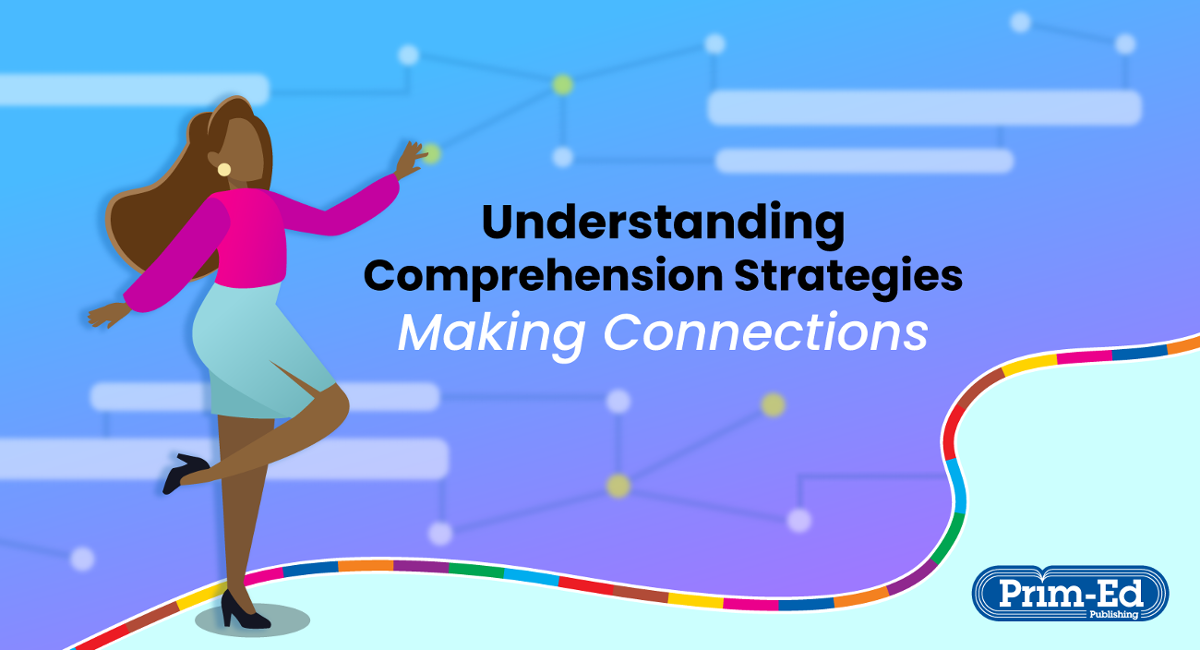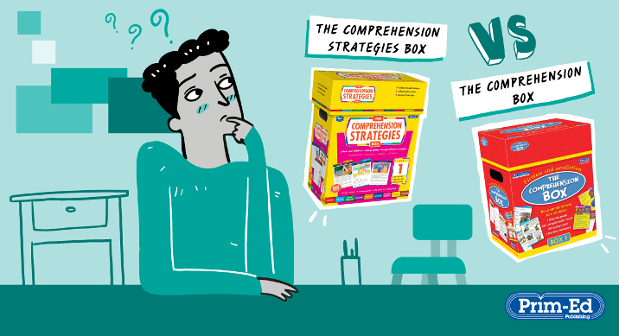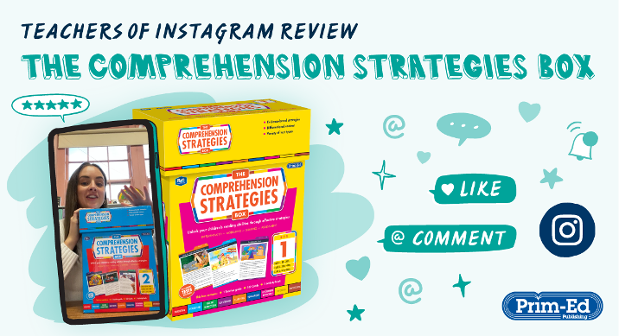- Wednesday 30 September 2020
Reading Comprehension Strategies – Making Connections
The Making Connections Reading Comprehension Strategy
Understanding what they read is one of the biggest difficulties a child will have while reading. It is therefore crucial that they are explicitly taught a range of strategies to encourage and master reading comprehension.
Making connections is one of many important reading strategies for children to learn. Making connections involves using background information, prior knowledge and personal experiences to construct meaning. Connections can be made to themselves, to texts and to the world. When children make connections to the text they are reading it helps them comprehend what they read, engage more with the text and retain the information in the text better.
Text-to-self connections link the text to the readers own life and personal experiences; for example, ‘That reminds me of when …’. Children with a wide range of relevant experiences will be able to make more in-depth connections.
Text-to-text connections link the reader’s knowledge of other texts they have read or listened to with the text being read; for example, ‘This text is the same as/different to the text about …’. The connections made can be varied; for example, there are similar characters, settings or plots, or the texts were written by the same author or have similar genres.
Text-to-world connections link what the reader knows about the world around them to the text; for example, ‘This text is like/different to something that happened in the real world …’. The connections can be to local, national or international events, and the past or present, that children have learnt about in newspapers, magazines or on the TV.
Questioning is very important in this strategy as are ‘think-alouds’. Children need to ask themselves questions before, during and after reading to make connections. Some children find making connections an easy strategy, but children with more limited experiences will find it quite difficult and may only be able to make vague connections.
Making Connections in the Classroom
Teachers can develop children’s abilities to make connections and therefore their ability to comprehend texts in a variety of ways.
Ask the children who, where or what the text is about. Select three or more of these most important nouns or ‘big ideas’ (or topic of the text). Once the ‘big ideas’ are established, children can start linking them to their prior knowledge and personal experiences, texts they have read and whole world ideas. When introducing this strategy, it is best to work on one connection type at a time, in the following order, therefore introducing the connection type that most children find the easiest first.
* Prior knowledge and personal experiences:
The teacher should encourage the children to link the big ideas of the text to their own life by asking questions like How is this like something that happened to you? How is this different to something that happened to you? Why is this important? How does this make you feel? What would you do if this happened to you? These questions link the text to the reader. (Text-to-self connections). This is usually the easiest type of connection for children to make with a text. Choose a text that you feel most children will be able to connect with and, after reading, tell your own connections with the text before encouraging children to share theirs.
* Prior knowledge of texts, books, TV shows or movies:
The teacher should encourage the children to link the big ideas of the text to other texts, books, TV shows and movies by asking questions like What texts have you read that have the same or similar characters to this one? What story have you read that is like this? What other texts have you read that are the same text type? How does this remind you of TV shows or movies you have watched? These questions link the text being read to other texts, movies and TV shows. (Text-to-text connections). This is usually taught second, as the next easiest connection for children to make. To model, choose two texts on the same topic; for example, a short fiction or non-fiction text and a poem, and plan out your questions, like those above, in advance.
* Prior knowledge of the world:
The teacher should encourage the children to link the big ideas of the text to the world by asking questions like How is this text the same as what happens in the real world? How is this text different to what happens in the real world? Is there anything similar on the news at the moment or recently? How is this related to …? What does this text remind you of? These questions link the text to news items or other sources of information about the world. (Text-to-world connections). Children find this the most difficult type of connection to make, as they won’t have as many personal experiences of the world as they do for the other two connection types. When choosing texts to model, choose texts where the children are likely to have knowledge of the topics covered.
Templates could be used to help children make connections in an organised way. These will make children think and will also allow you to see the type of connections they are making. These should encourage children to choose a sentence from the text and say how it connects to themself, another text or the wider world.
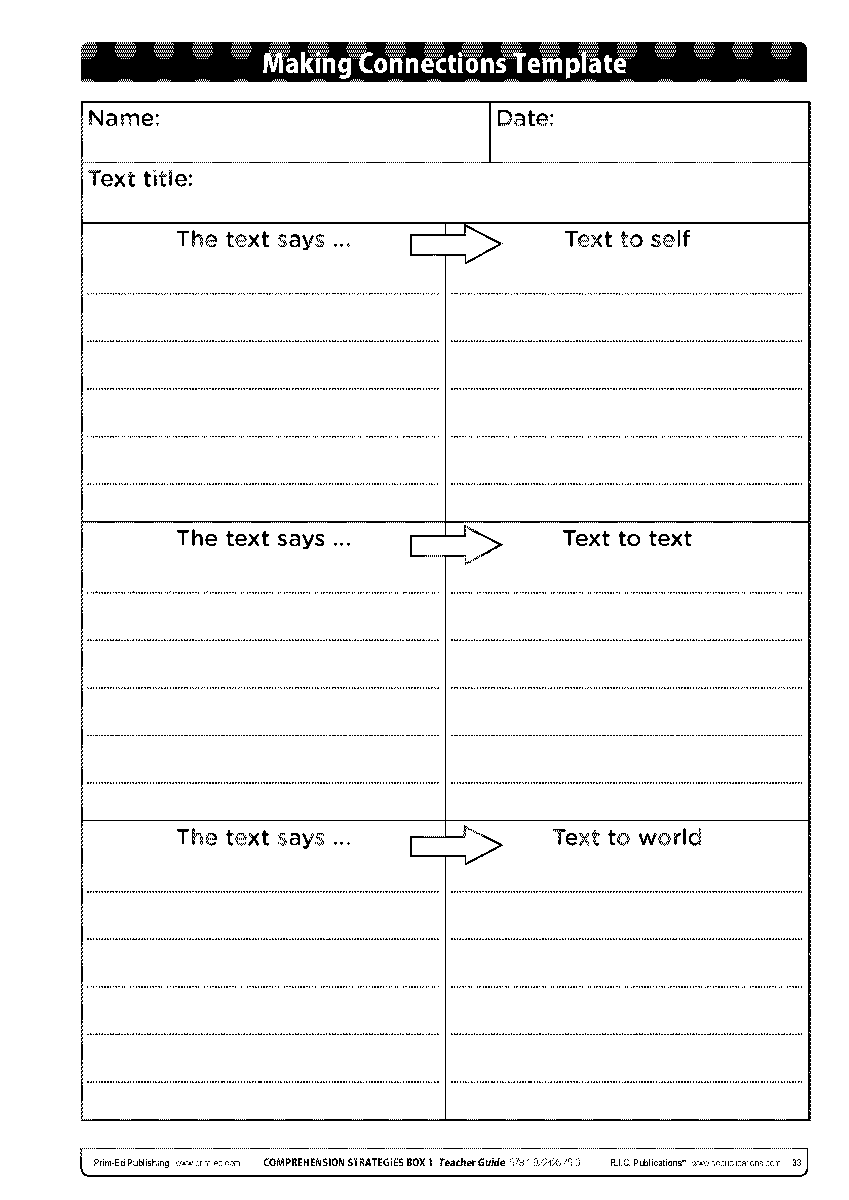
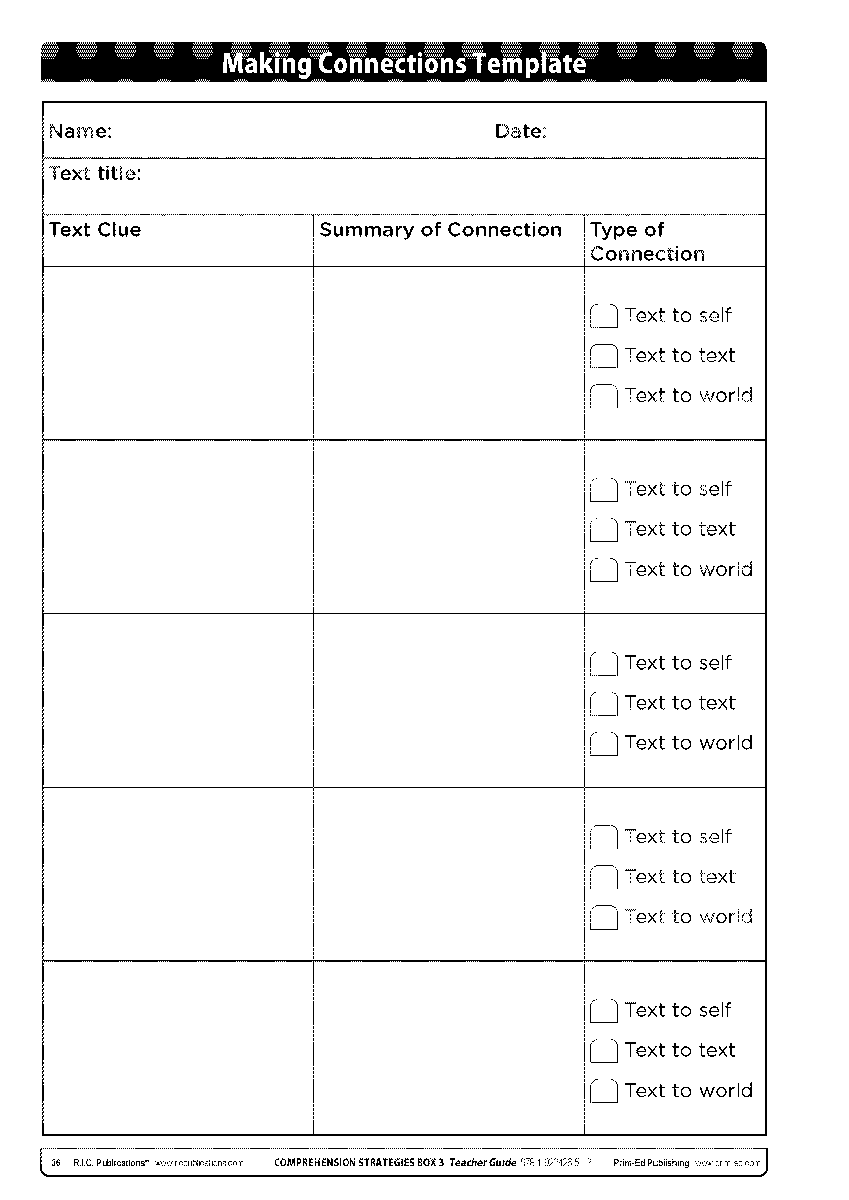
Templates from Teacher Guides in The Comprehension Strategies Box series.
Making Connections in The Comprehension Strategies Box
Making Connections is the third of nine reading comprehension strategies covered in the The Comprehension Strategies Box series. This boxed series, written at six levels for the six main primary school years, consists of full-colour, differentiated, fiction and non-fiction reading cards which cover nine different comprehension strategies, a comprehensive teacher guide that explains the strategies and how to use the series, and an activity book with photocopiable activities to enable children to focus on and practise each strategy.
Each reading strategy is introduced in the teacher guide, with a page of background information for teachers to familiarise themselves with.
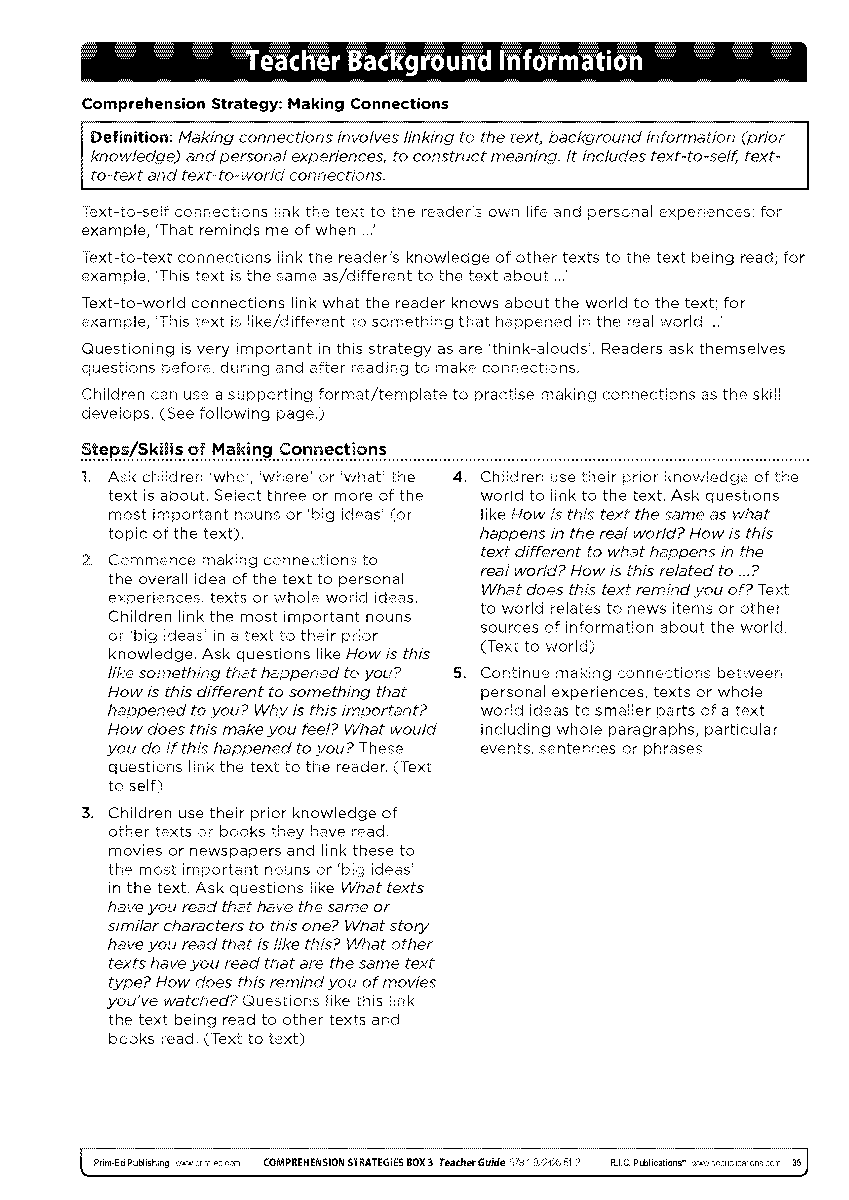
Sample page from Teacher Guide 3 in The Comprehension Strategies Box series.
The teacher should use the modelling text provided to introduce and demonstrate the making connections comprehension strategy to their class. The illustrated text should be displayed onto an interactive whiteboard, to enable the teacher to conceal and reveal parts of the text to the children, and highlight text and add annotations as appropriate. The steps the teacher should go through to model and teach the strategy are clearly laid out in the teacher notes. The modelling is oral and includes what the teacher should say at various stages of reading the text; for example, the title, the first paragraph, and so on. To start, the strategy is explained, and the three types of connections are introduced. Children are then asked questions about what they make connections with when they read the title and various paragraphs from the text.
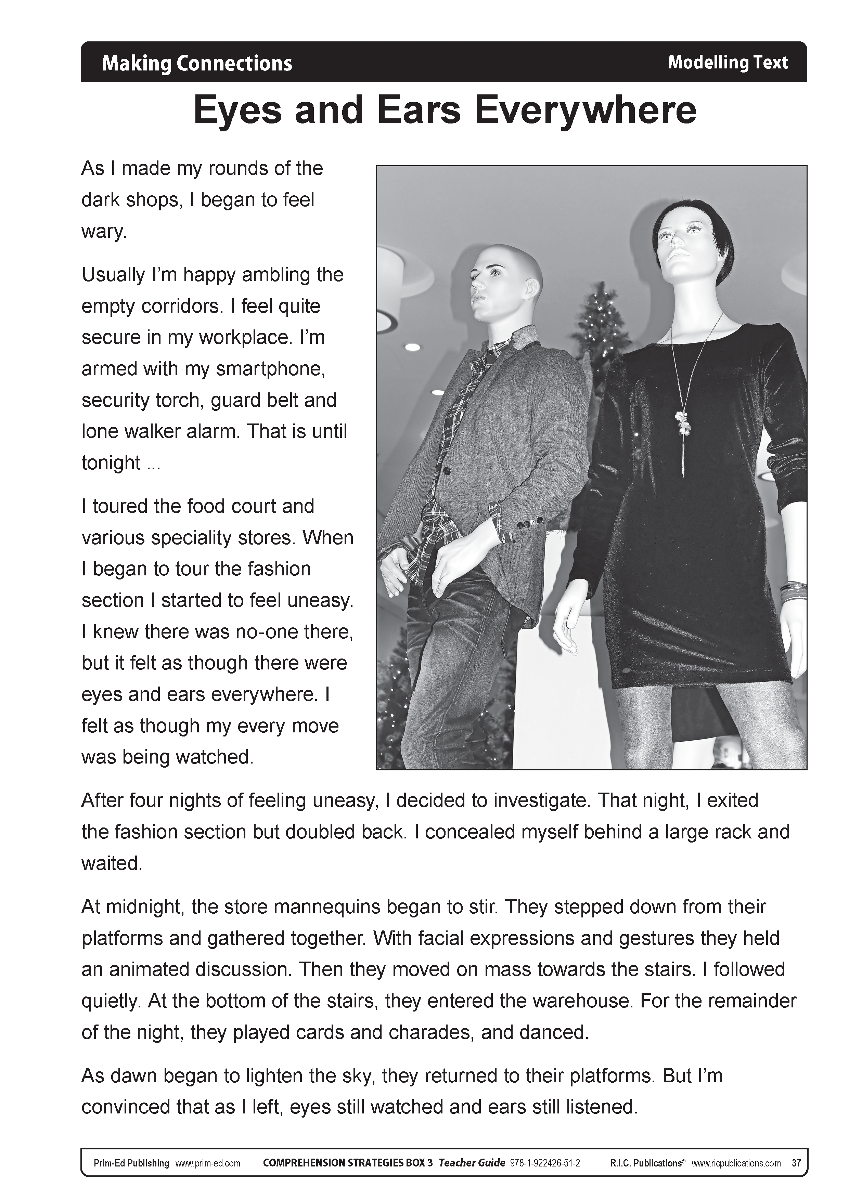
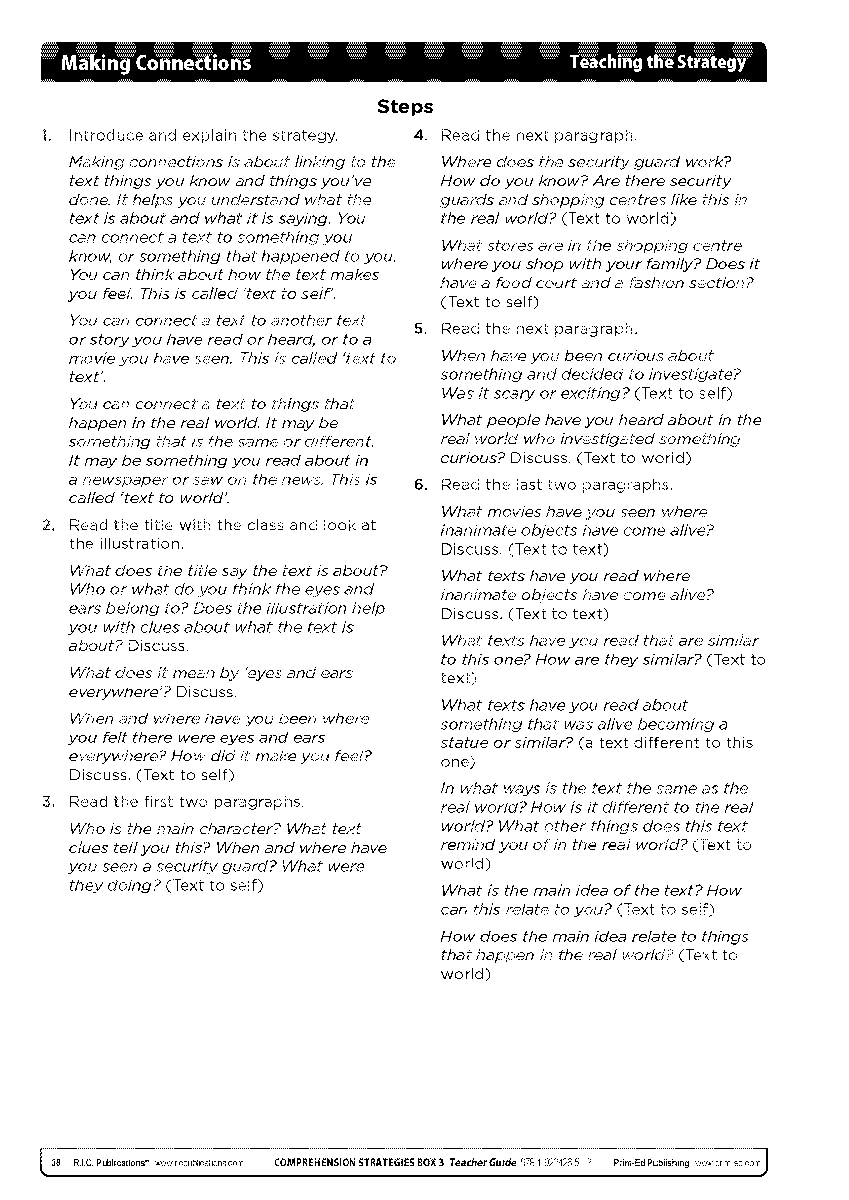
Sample pages from Teacher Guide 3 in The Comprehension Strategies Box series.
In a similar way to how the modelling text was presented and used with the class, the teacher should then present the sharing text. This can either be another oral activity or children may work with each other to answer the questions and practise the strategy together.
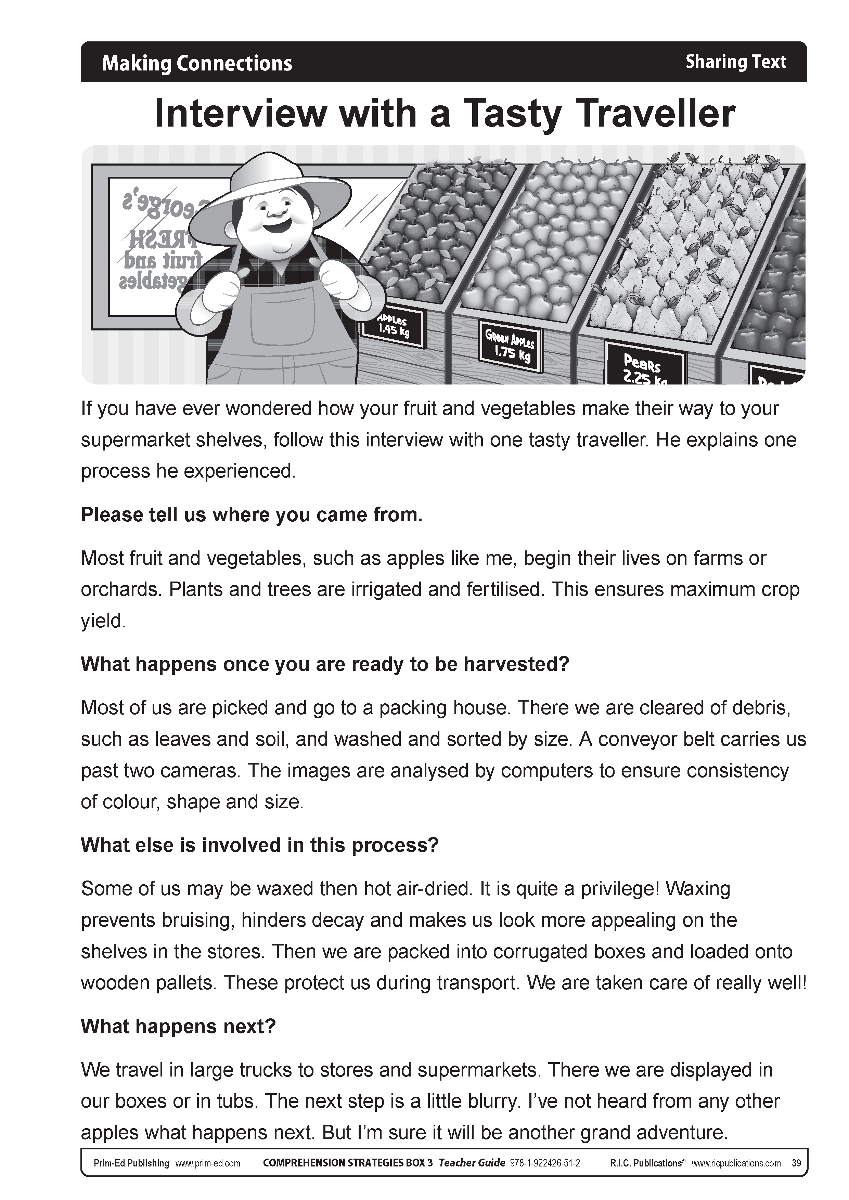
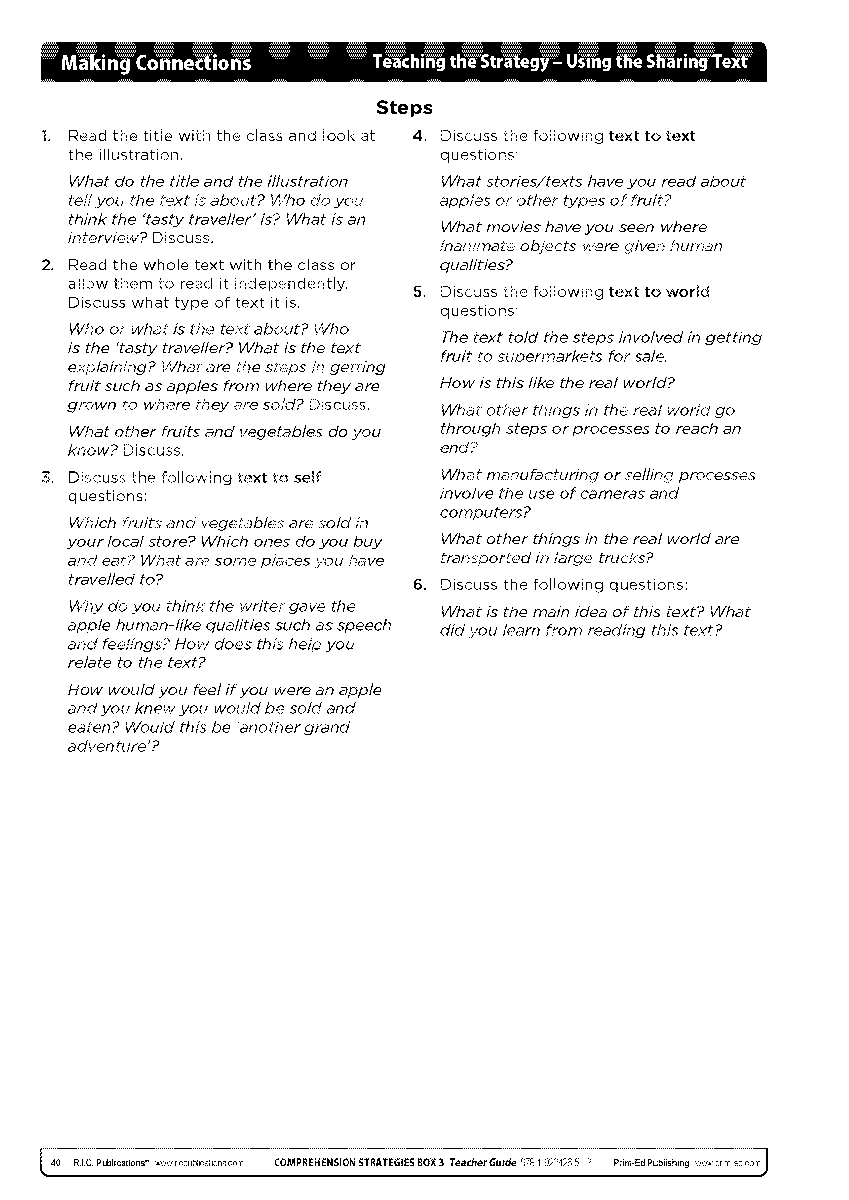
Sample pages from Teacher Guide 3 in The Comprehension Strategies Box series.
The children can then work on some of the activity cards, either individually, in pairs or in small groups. The teacher should select a particular level of card (1, 2 or 3), depending on the reading level of the child or group. A placement test is provided to help with this. There are two texts on each card, so children can practise the making connections strategy using more than one text. The children should use the corresponding resource sheets in the activity book which pose questions and activities that children will need to make connections to answer.

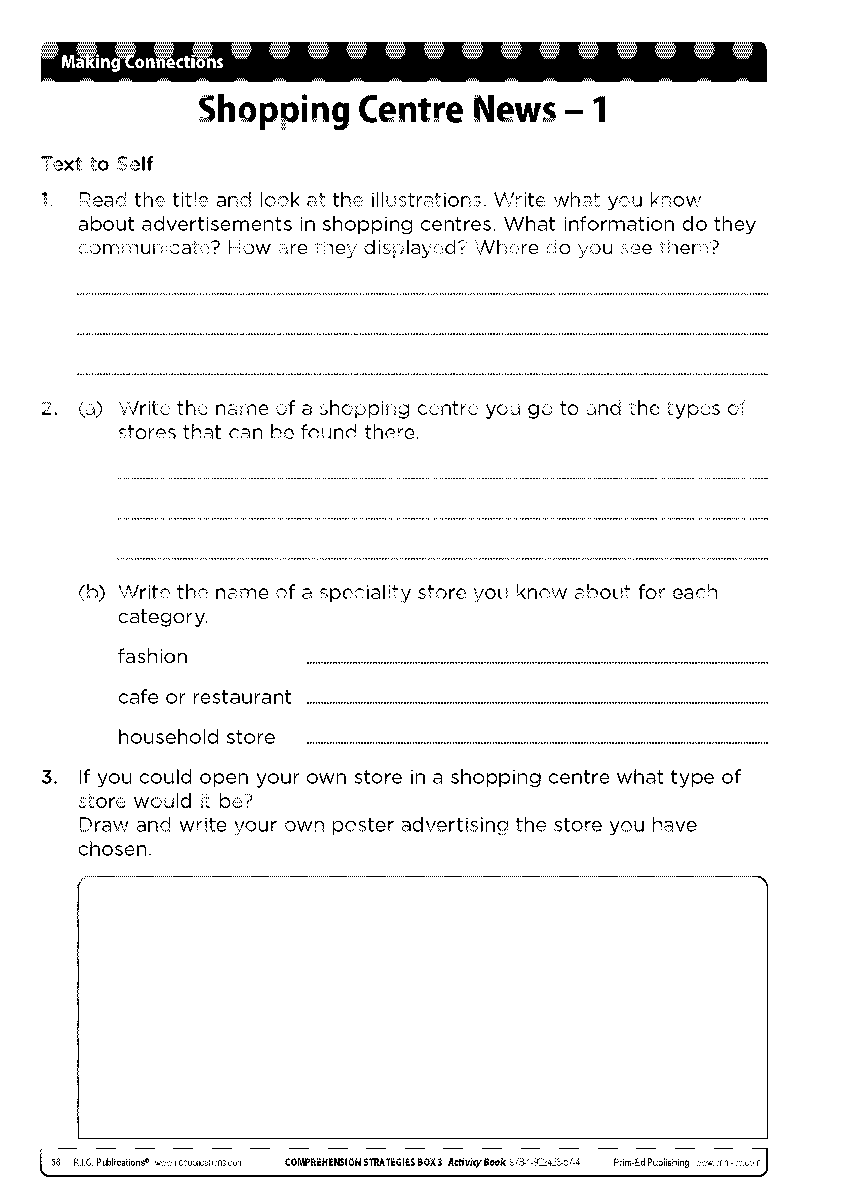
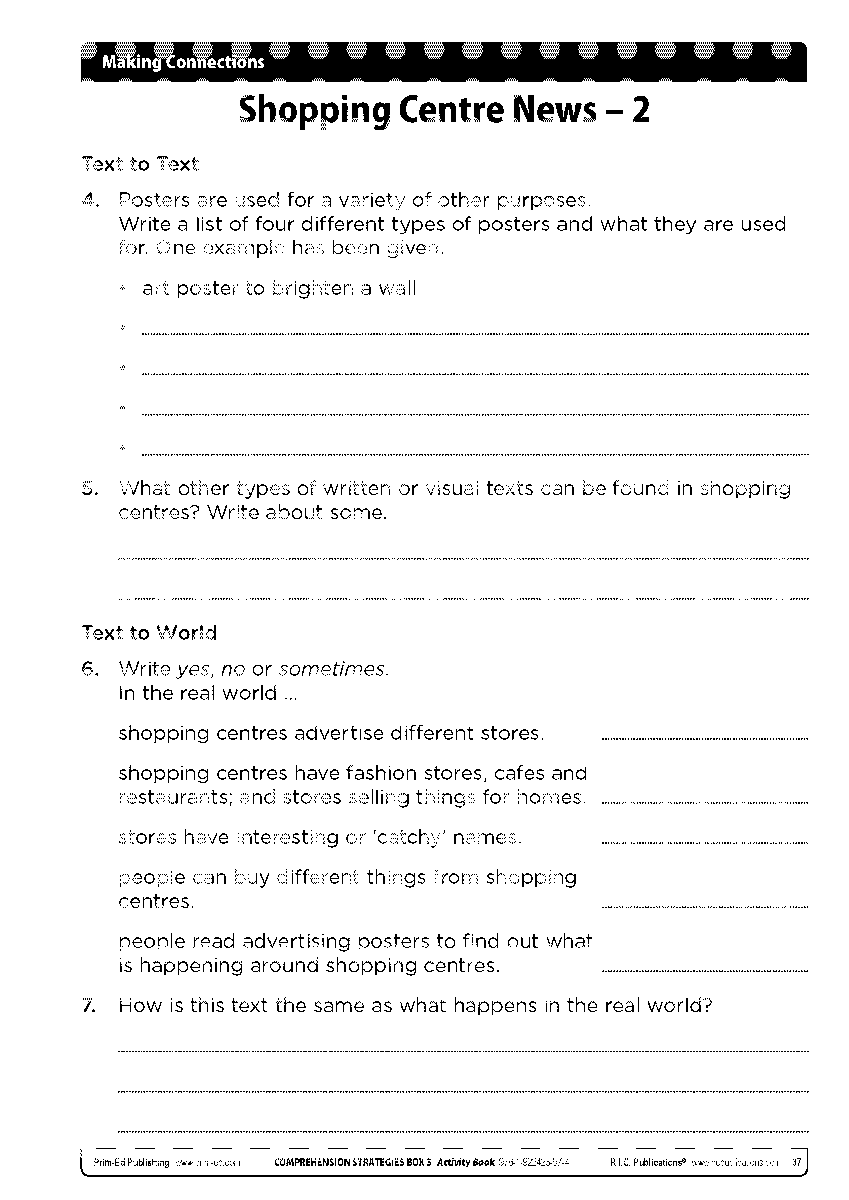
Card and sample pages from Activity Book in The Comprehension Strategies Box Box 3.
The teacher can use the assessment text in the teacher guide and the corresponding assessment questions to assess how well each child has understood and can use the visualising comprehension strategy.
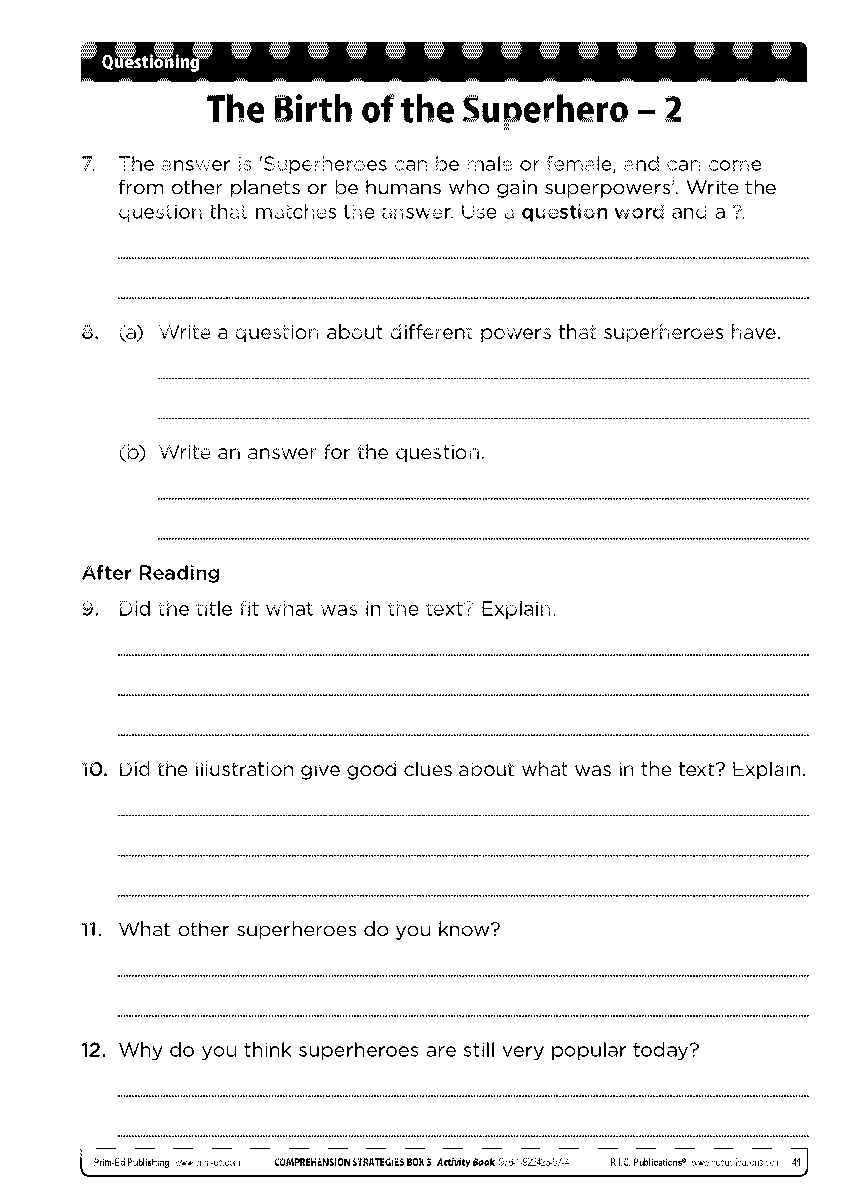
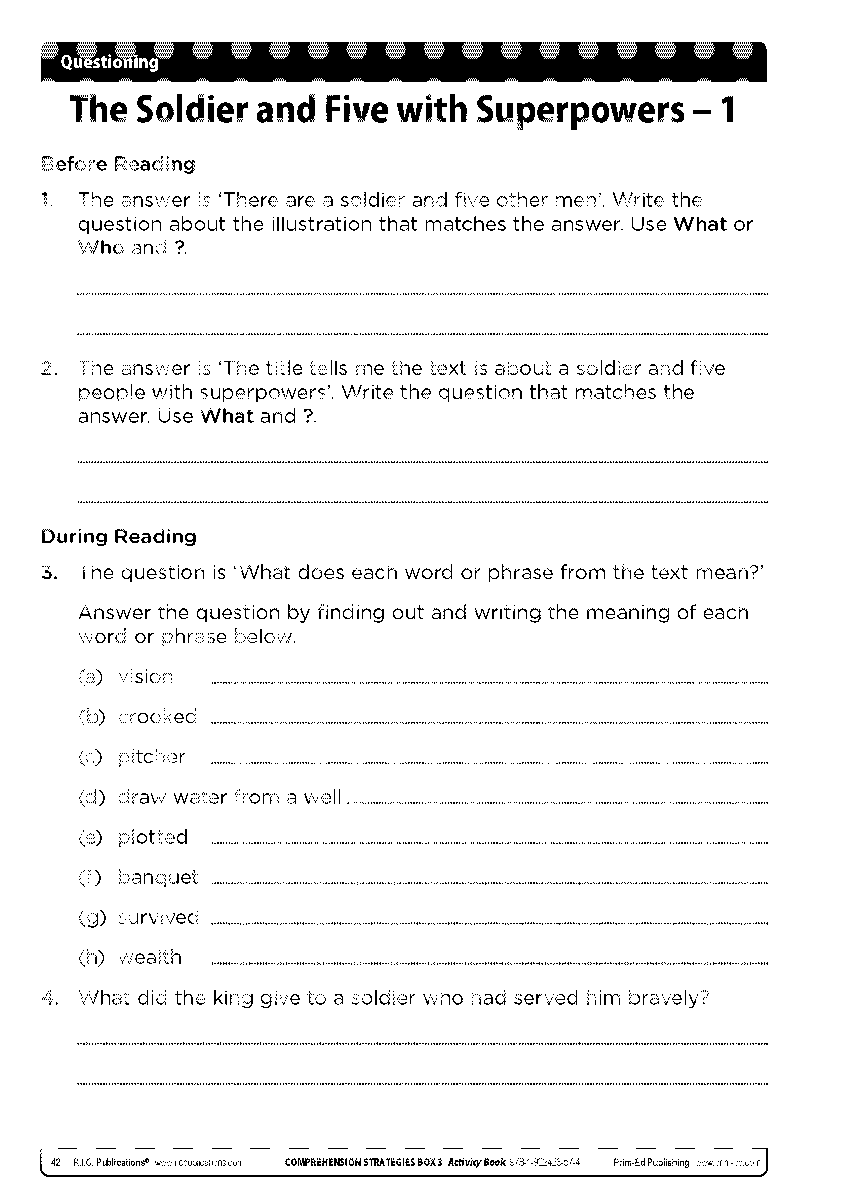
.png)
Sample pages from Teacher Guide 3 in The Comprehension Strategies Box series.
More Information About The Comprehension Strategies Box:
For further information about The Comprehension Strategies Box and to view sample cards and pages from other levels, check out the series page here.
